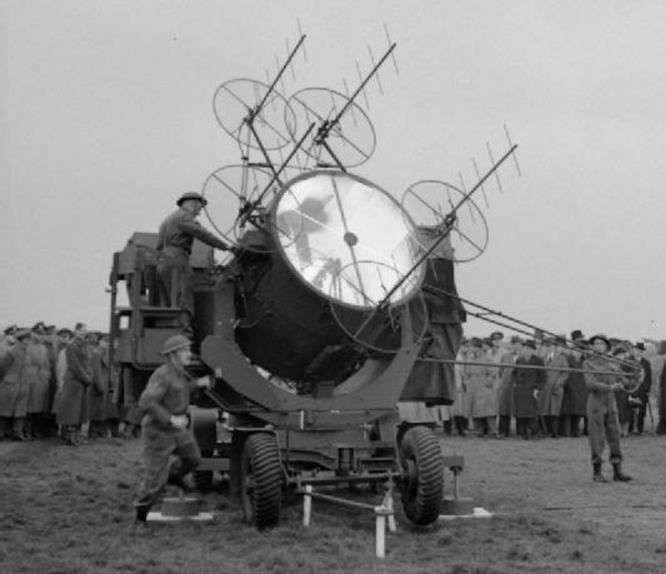Killer Belts
Searchlights were deployed as single lights arranged in 'Indicator Belts', using low powered projectors on a 10,500 yard spacing.
In 'Killer Belts' high powered projectors on a 6000 yard spacing were used.
The 'Indicator Belts' pointed out the incoming raiders before they entered the 'Killer Belt'.

A radar system was attached to searchlights in June 1940. This equipment, known as SLC (searchlight control), or Elsie.
It significantly increased the liklihood that a passing aircraft would be "caught" in the beam.
By the Baedeker Raids, they had became semi-automated and each searchlight (and anti-aircraft gun) could be fitted with four-foot radar "mirrors" that could track a target automatically. (Photo Credit: Imperial War Museum)
The RAF placed fighters orbiting vertical searchlight beams which acted as beacons, these lights depressing and pointing the interceptors towards their assigned targets as the enemy bombers approached.
Code named 'Smack', this procedure was to operate in parallel with the GCI system throughout he war and was of great help to the night fighters.
Click to return to the previous page